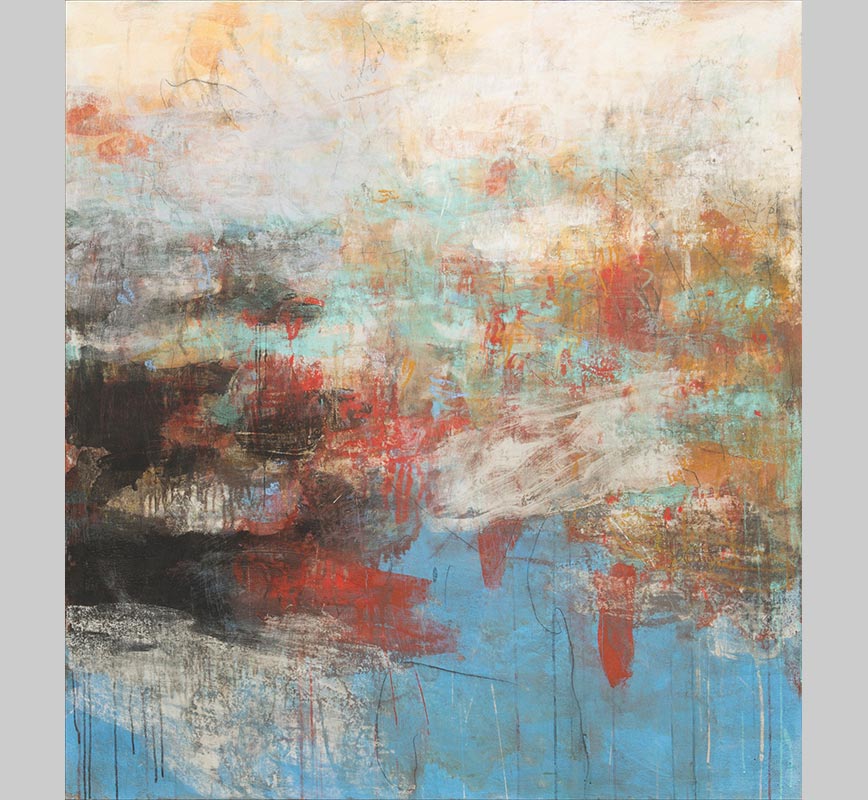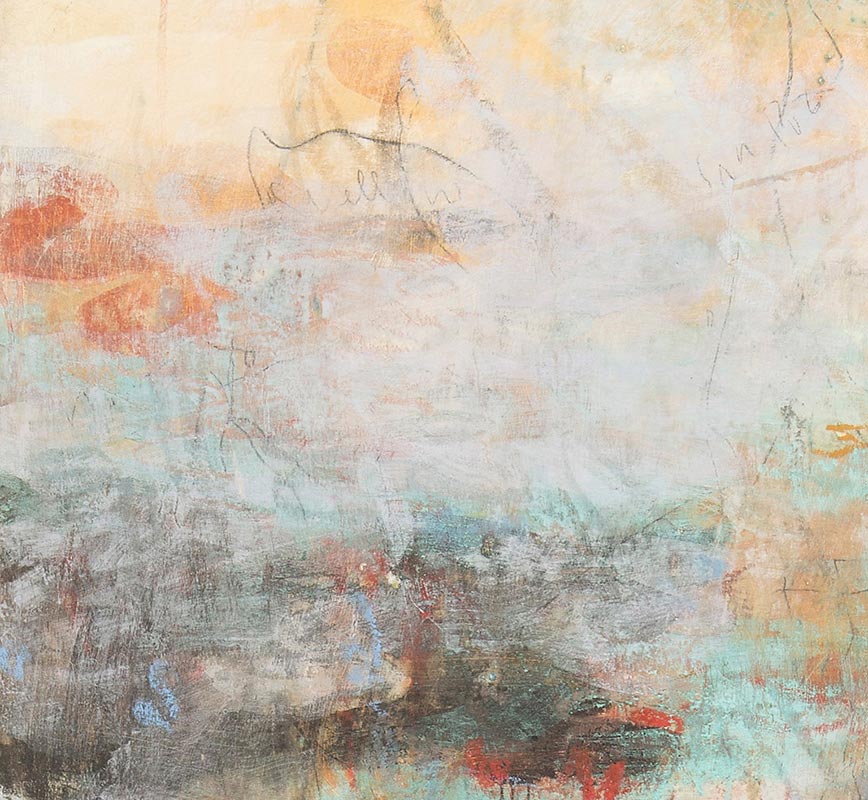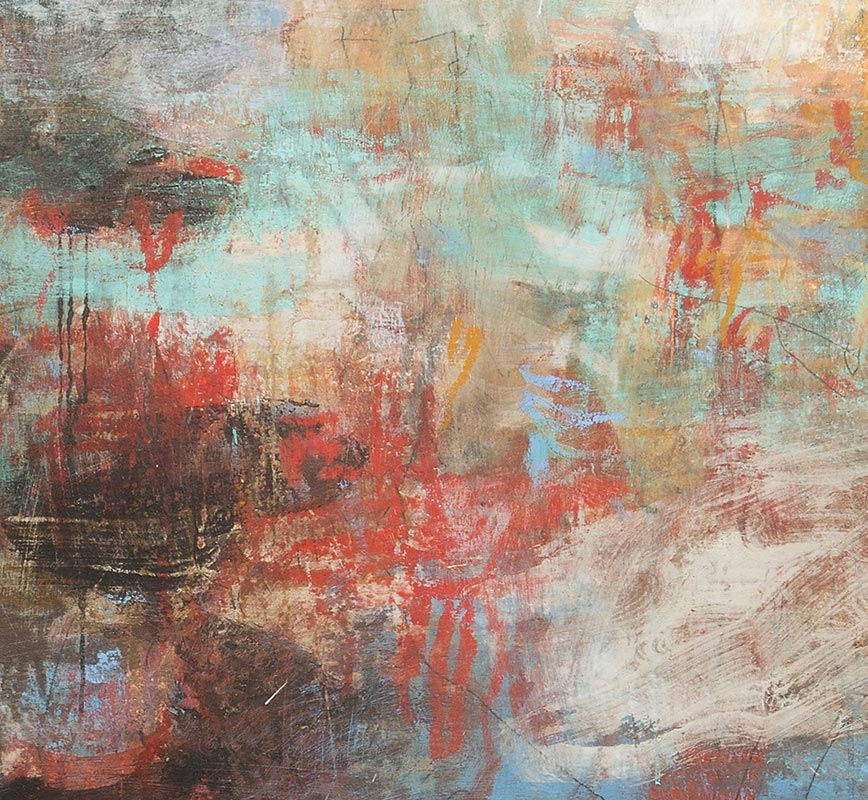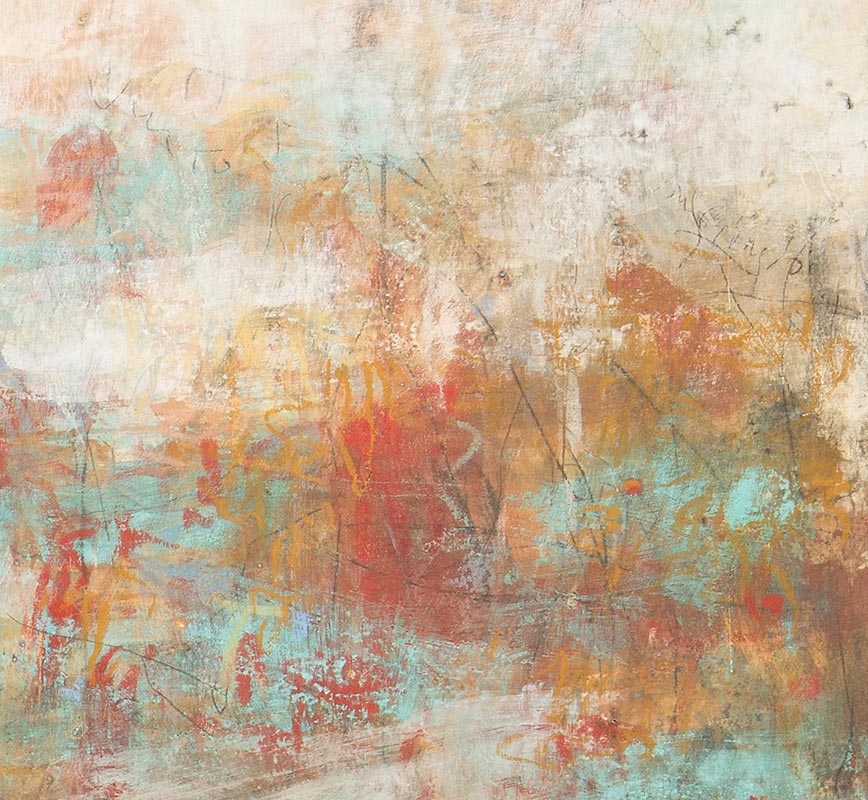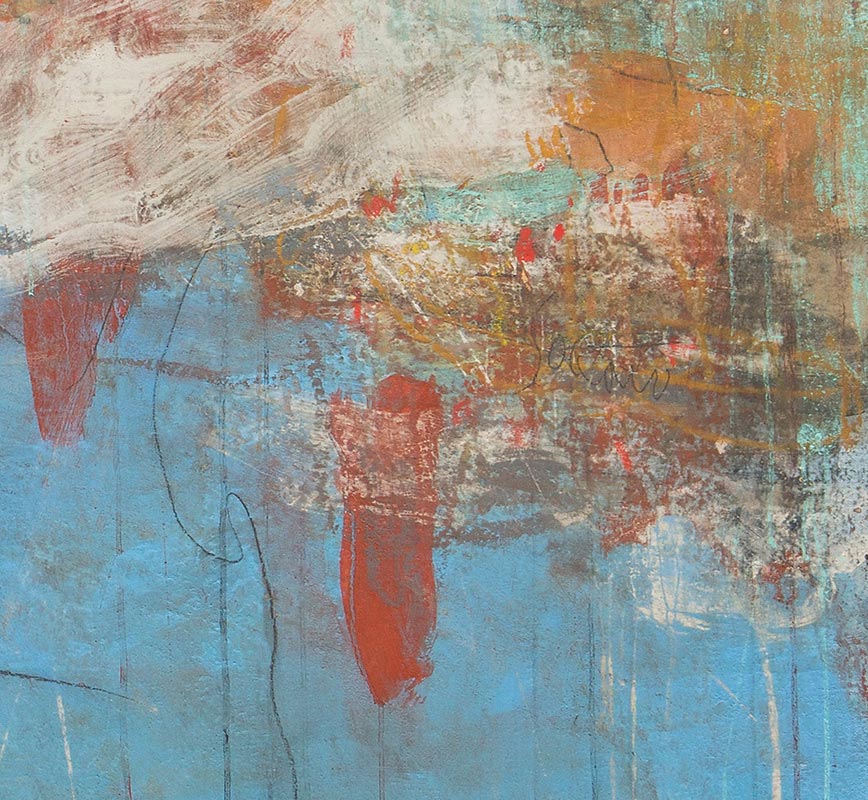EXHIBITION
AN ALCHEMY OF MATTER
Orazio De Gennaro:
Sannio, 2013
Oil Pastel, Graphite, and Pigment on Canvas
82 x 69 in
208 x 175 cm
US $ 14,000
This painting exudes a sense of earthiness, with warm reddish-browns and deep yellows emerging through layers of more neutral and cool tones, reflecting the physicality of the artist's process. The title, Sannio, references a historic region in Southern Italy, tying the work to the land of the artist's ancestors. The painting feels like an evocation of memory, where forms and colors emerge and recede through atmospheric layers. The use of earthy pigments and materials like lime and marble dust imbue the work with a tangible, tactile quality, grounding the abstract composition in the physical world. ...more
Go to Artwork: NEXT PREV ALL
